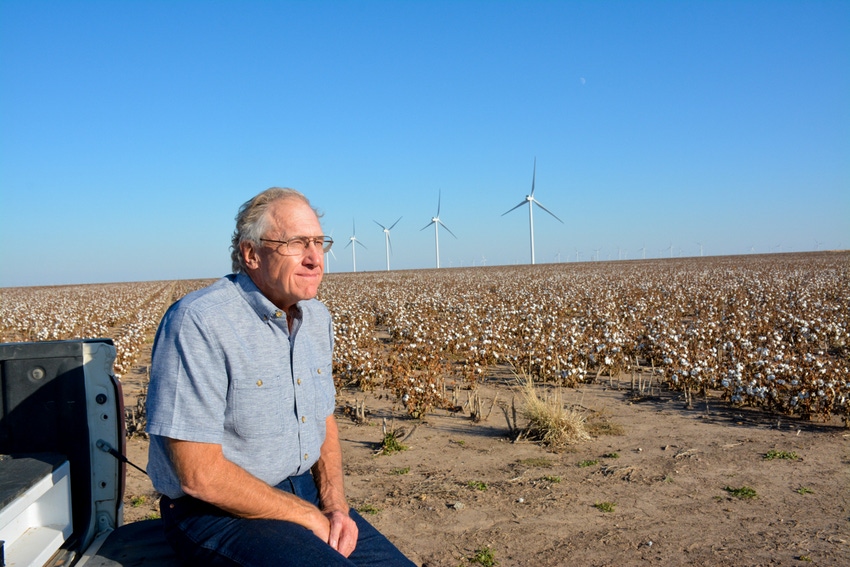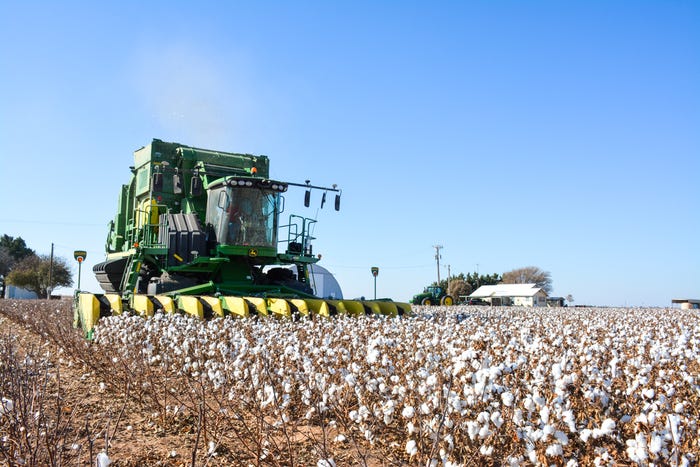
Standing in his drip-irrigated field north of Lockney, Texas, producer Dan B. Smith watches as his John Deere stripper-baler slowly makes its way through his 40-inch cotton rows. Despite the high humidity and with the third rain-event forecast since harvest began, Smith's not taking any chances.
"We're stripping this cotton and it's about 55% humidity, which normally, I would never do, but this cotton is starting to come out of the burr, and they've forecast up to a possible inch or two of rain, Wednesday and Thursday, so we're going slow," he said Nov. 5. "I don't like to do it but if this cotton gets rain on it, it's going to be a lot worse."

Smith, along with many Southwest producers, has been dealing with abnormal conditions since the 2019 season began.
"I wouldn't say it's been a real good year for us. We've had a trying time getting a crop out," Smith says. "This is a nice-looking field of cotton, especially from the highway, but what we're finding is the cotton isn't making what it looks. All of the bolls are four-lock bolls and they should be five."
Pulling out a lock of cotton, he adds, "Every single boll of cotton is four locks, so that's about this much cotton that the plant didn't make per boll. Also, there are a lot less bolls per plant for the inputs applied. That's why cotton you thought was going to make 3 bales is making two to two-and-a-quarter because 20% of the yield just isn't there."
See Photo Gallery, 2019 Cotton harvest
Smith blames a combination of weather extremes. "May and June we were extremely wet and cool and then early July and August, we were hot and dry, over 100-degree heat—just as hot as we can be. And I guess the combination of all of those factors is what did it."
And on a drip-irrigated field rotated with corn and supported with ample moisture, Smith says, "We're going to be lucky if we make 2.5 bales of cotton. It had the inputs for 4 bales and it looks like (driving by) we ought to be making three. And that's pretty much the story across my farms and what I'm hearing across the area. It's not making what we thought."
Dryland
His dryland fields have not fared well either. "It's definitely not a dryland year," Smith says. "When we planted this crop, we had a full moisture profile and we felt confident we'd get a few rains along the way, but it never happened. And it was so hot.
"The boll count is 50 to 100 pounds an acre and what we're running into, our federal crop guarantee on this particular field is 350 pounds. If you have the cotton seed endorsement, that's approximately 80 to 81 cents per pound on about a 350-pound yield, so you can see, even though we have a stand, some yield, maybe 50 pounds or so, it's just not worthwhile to go to the expense to harvest this crop and more than likely, the grades will be pretty low and therefore, a low loan rate."
See, Texas producer Dan Smith says cotton yields not what they thought
As a result, Smith says he will shred and plow up most of his dryland acres. "Certainly not what we were hoping for."
While Smith typically yields anywhere from one to two-bales to the acre on his dryland cotton, he says between the cost of seed along with weed control, which he estimates is about $100 per acre, he doubts, even with crop insurance, he'll recover the production costs he has in it.
About the Author(s)
You May Also Like






